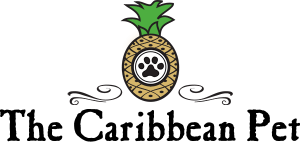- Language: English
- Currency: U.S. dollar
- Temperature: Average 82°F summer, 78° winter
- Square Miles: St Croix: 84; St John: 19; St Thomas: 32
- Approx Population: 108,600
ABOUT. The three US Virgin Islands, St Croix, St John, and St Thomas, are located at the top of the Lesser Antilles chain. Since the 1960s, these islands have been developed to attract tourists. The US Virgin Islands were owned by Denmark for centuries until the United States purchased them in 1917. Historians document that the first inhabitants, the Ciboneys, arrived on the islands during what is considered the Pre-Ceramic Culture. Arawaks arrived next and established sites on St. John and St. Croix around 100 AD. Caribs and the Tainos followed. Christopher Columbus sailed into Salt River on his second voyage in 1493, claiming the islands for Spain. In the 1600s, many countries expressed interest in the islands, including France, Holland, Spain, Denmark, England, and the Knights of Malta. However, the Danes established the first settlement on St. Thomas in 1672 and then St. John in 1694. St. Croix was added to the Danish West India Company in 1733. Plantations soon emerged on the islands. A treaty with the Dutch of Brandenburg in 1685 established St. Thomas as a slave-trading post. Freedom to slaves was not granted until Moses “Buddhoe” Gottlieb led a revolution in 1848 on St. Croix. During World War I, the United States realized their strategic war value and purchased the islands from Denmark for $25 million in gold. In 1927 citizenship was granted to Virgin Islanders. The Organic Act of 1936 allowed for the creation of a senate and in 1970, the U.S. Virgin Islands elected its first governor, Melvin H. Evans.
St Croix is the largest at 82 square miles in area and most developed of the US Virgin Islands. St. Croix consists of two towns; Christiansted and Frederiksted. The Victorian architectural quality and rich history of seaports, slavery, cotton, and sugar plantations makes Christiansted, founded in 1734, a National Historic Site. The terrain of the island varies from low, seaside hills in the east to rainforest in the west. St John is the least crowded, of the three islands. St. John is mainly a US National Park with 60% of its land area comprising the pristine Virgin Islands National Park. This park is abundant in plants and birds. St. Thomas is the most developed of the islands and contains the capital city of Charlotte Amalie. Charlotte Amalie is the most popular cruise ship destination in the Caribbean Sea. Danish street names still reveal the Dutch influence. Collectively, the islands offer beautiful white sandy beaches.
In 2003, the Legislature passed a bill making “Quelbe”, the official traditional style of the Virgin Islands’ folk music.Quelbe was created self-taught musicians who were slaves living and working on sugar plantations. Danish law forbade drum beating and dancing, so slaves incorporated European style into their music.This musical style traces back to Africa and Europe. Quelbe is a fusion of rhythms, songs, chants, and melodies. Instruments included homemade bamboo flutes, bass drums, steel triangles and dried squash equipped with a wire prong to produce the sound.
Carnival is the biggest party of the year, and each island has its own. The first carnival was staged in 1912 during the final years of Danish occupation and lapsed during World War I. Revived in 1952, carnival has become the second largest festival in the Caribbean. St. Croix’s Christmas Festival starts in December with an adult’s parade on Three Kings Day. St. Thomas’s carnival culminates in the final week of April. St. John’s celebration is Fourth of July week. A month-long series of dazzling pageants and talent shows is held to choose royalty to rein over the festival. Fun events such as a boat race and a Greased Pig Contest, j’ouvert, a morning jump up, eateries with the islands’ best traditional foods and the crowing of a parade King and Queen.

